SPOILERS FOR STORM KING’S THUNDER
Personally, I’m a sucker for the core concept of Storm King’s Thunder. A War Against the Giants campaign has been on my bucket list for many a year now, so the premise of giants beating the war drums is basically custom made for me.
The basic premise here is that Annam the All-Father, god of the giants, is upset that the giants did jack-all to stop Tiamat’s machinations during the Tyranny of Dragons campaign. So he dissolves the Ordning — the divinely decreed feudal(?) order which keeps giant society in order. This is a little vague in the book, but here’s how I think of it: Imagine that the divine right of kings was actually real; the legitimacy and authority of political leadership ultimately derives from the fact that a god said, “That guy is in charge.” And then one day the god shows up and says, “Not any more. None of y’all need to pay taxes.”
Pandemonium.
With the storm giants no longer king of the hill (giants), it’s a toss-up who’ll become the new King of the Giants. Ironically, this allows a draconic faction led by the blue wyrm Iymrith to infiltrate and decapitate the storm giant court, further destabilizing the situation. So now every giant is planning how to stomp their competitors, profit from the chaos, and/or prove that they should be the new king, and the conflict is boiling out across the Sword Coast and Savage Frontier.
Enter the PCs.
Storm King’s Thunder can then be broadly broken down into six phases:
Phase 1: The PCs deal with the aftermath of a cloud giant attack in the small village of Nightstone.
Phase 2: They follow a lead from Nightstone to one of three cities (Bryn Shander, Goldenfields, or Triboar), which is then attacked by giants while they’re there.
Phase 3: In the wake of the giant attack, they receive a plethora of plot hooks that will pull them towards various locations across the Sword Coast and Savage Frontier. This section of the campaign basically functions as a pointcrawl, with the PCs navigating the Forgotten Realms and running into additional plot hooks and mini-scenarios (most of which are themed to the giant troubles) as they travel.
(If you’re not familiar with a pointcrawl, the basic structure is a map of points connected by routes and keyed with content. PCs travel along the routes to get where they want to go, passing through points along the way and triggering the content keyed to those points. The pointcrawl in Storm King’s Thunder, although not referred to as such, is a pretty pure example of the form: The points are generally settlements on the map and the routes are literally the roads and trails connecting them.)
Phase 4: The PCs learn of the Eye of the All-Father, a powerful giant oracle. In exchange for recovering artifacts stolen by the Uthgardt barbarians, the oracle will tell the PCs that they need to travel to Maelstrom, the court of the storm giants.
Phase 5: The PCs raid one of five giant strongholds to retrieve a magical artifact they can use to teleport to Maelstrom.
Phase 6: The PCs journey to Maelstrom, forge an alliance with the storm giants, investigate the disappearance of Hekaton, the storm giant king, and (hopefully) rescue him. He then leads them to attack Iymrith’s lair.
The general “only the PCs can discover a hidden evil fomenting a war between giants and small folk” is clearly taking a thematic note from the classic GDQ series, but this is much more a conceptual riff than a Ravenloft-style reboot. It’s an ambitious campaign with epic stakes and a worldwide scope.
FRAGILITY
What my summary of Storm King’s Thunder plot hides, unfortunately, is that the transitions between the different phases of the campaign are incredibly awkward at best.
For example, let’s take a look at Phase 3. The basic idea here, as described briefly above, is that you rescue one of the cities in Phase 2 and receive a bunch of plot hooks that drive you to travel across the map. Here are what the hook lines look like for Bryn Shander (red), Goldenfields (yellow), and Triboar (blue):
Although drawn in straight lines (rather than along likely routes of travel), it should still be clear how following these leads will send the PCs crisscrossing the landscape. And, as they travel, they’ll be having encounters — from either scripted random encounters or keyed locations throughout the North — which will give them more leads to pursue. Pursuing those leads, of course, will lead to more encounters, which will result in more leads, which will… Well, you get the idea.
Eventually, in the course of these adventures, the PCs will discover the existence of the Eye of the All-Father and transition to Phase 4 of the campaign.
Unfortunately, there are some significant problems with this.
First, too many of the scenario hooks that transition the campaign from Phase 2 to Phase 3 are, for lack of a better word, boring. In Goldenfields, for example, they include:
- Deliver a letter for me.
- Come with me to visit my friend.
- Deliver a message for me.
- Deliver a letter for me.
I think of these as mail carrier hooks. There’s nothing inherently wrong with mail carrier hooks, but the structure of a mail carrier hook is so utterly devoid of purpose that it becomes crucial for the message itself to be of great import.
A good example of this in Storm King’s Thunder is the quest Darathra Shendrel gives in Triboar: Giants are invading! The Harpers must be warned!
That’s clearly meaningful. It matters. The PCs will feel important being asked to do that.
Unfortunately, most of the hooks in Storm King’s Thunder look like the one given by Narth Tezrin. “Hello! Heroes who just rescued this entire town! Could you deliver some horse harnesses for me?” This is almost demeaning. It’s clearly meaningless and there’s absolutely no reason why the PCs or the players would care about this.
The lackluster quality of these hooks is then exacerbated by the fact so many of them just… dead end.
For example, Darathra Shandrel tells the PCs to bring urgent word to the Harpers of the threat of the Giants! When the PCs arrive, the Harpers… just don’t seem to care that much. So that which seemed meaningful suddenly isn’t.
Others just trail off without any explanation. In Bryn Shander, Duvessa Shane asks the PCs to carry a message to a ship called the Dancing Wave in Waterdeep. When they arrive, the PCs discover that the ship is missing! Storm King’s Thunder then spends several hundred words detailing how the PCs can hire a ship to go looking for the Dancing Wave and then… that’s it. No explanation of what they might find if they go looking. No explanation of what actually happened to the Dancing Wave.
This actually happens a lot in the book. In Goldenfields, for example, the PCs are sent to look for a missing druid. They’re sent to talk to someone who might have seen him. That person says, “Nope. Haven’t seen him in awhile.”
And, once again, that’s it. No clue what happened to him. No suspicion on the part of the writers that the PCs might want to keep investigating.
The problem perpetuates on a macro-scale at the other end of Phase 3: None of the PCs’ expeditions actually go anywhere.
They go to places in the North and they point to other places. Along the way they run into giants doing various things. And, logically, this should all be taking you some place: Your new faction alliances should give you anti-giant operations to pursue. You should slowly be piecing together clues and your investigation into the giants should ultimately lead you to the Eye of the All-Father and the next phase of the campaign.
But it doesn’t.
What happens instead is that, at some completely arbitrary point unrelated to anything to the PCs are doing, the DM is supposed to trigger an encounter with Harshnag, a friendly giant, who says, “Hello! The DM has sent me with the next phase of the campaign! Would you like to know more?”
We’ve looked at Phase 3 here (coming and going), but unfortunately this type of fragility is endemic to the whole campaign:
- Phase 1 ends with three mail carrier scenario hooks pointing to Bryn Shander, Goldenfields, and Triboar. But rather than giving the PCs the choice of which lead to pursue, the book instructs the GM to instead railroad them.
- The Phase 4 into Phase 5 transition is designed to loop so that the PCs can get multiple leads from the Eye of the All-Father in case something goes wrong and they can’t get the magical artifact they need from the first giant fortress they raid… except the adventure bizarrely slots in a cutscene where the Eye of the All-Father gets blown up so the PCs can’t go back there.
- Even starting the investigation in Phase 6 requires the PCs to get a clue from an NPC who is innately hostile to them. It then requires the PCs to reach several conclusions for which no clues are included at all, while the threadbare breadcrumb trail which does exist is peppered with gaping plot holes.
Perhaps strangest of all, the adventure doesn’t actually have an ending. The central goal of the campaign is “stop the giant attacks.” The rescue of Lord Hekaton and the death of Iymrith is presented — structurally, textually, and diegetically to the characters — as the way to achieve this.
But because Iymrith’s deception and Hekaton’s disappearance are not what broke the Ordning, there’s no logical reason to think that resolving either of those things will result in the Ordning being reformed and the crisis coming to an end. And, in fact, the book more or less concedes this in the “Adventure Conclusion” section on page 230.
CRASHING THE PARTY
Let’s back up and talk about Harshnag for a moment.
When he shows up and says, “Follow me to Phase 4!” this creates a giant-sized problem for Storm King’s Thunder.
Harshnag is a prototypical Realms NPC who is much, much cooler and much, much more powerful than the PCs and shows up to hog the spotlight.
Storm King’s Thunder at least briefly acknowledges the Harshnag Problem and attempts to solve possibly the least important part of it (combat balance) by having Harshnag literally patronize the PCs by pretending he’s not as powerful as he actually is (p. 120):
Harshnag tries not to dominate combat if it means making his smaller compatriots feel inferior. He doesn’t want to be seen as a showoff. He can reduce his combat effectiveness in the following ways:
• He makes one attack on his turn instead of two.
• He uses the Help action to aid a character’s next attack against a foe. […]
• He does nothing on his turn except taunt an enemy who might otherwise attack a character. Assume the effort is successful and the target switches it attention to Harshnag, unless the character insists on being the target of that threat.
I sure hope no one dies while you’re jerking off, Harshnag.
After that half-hearted effort, Storm King’s Thunder gets back down to the work of completely mishandling a powerful NPC ally. We can start with the railroad doors to the Eye of the All-Father that are needlessly designed so that only the NPC can effectively open them and then eventually culminate with an NPC-focused cutscene where the PCs are turned into mute bystanders while Harshnag solos Iymrith.
(The adventure is so insistent on this that it will literally KILL A PC rather than let them try to participate in the cutscene.)
For a detailed explanation of why this sort of thing is a terrible idea, check out How NOT to Frame a Scene. But the key thing is that, while having a much more powerful PC show up is not inherently bad, there are generally two maxims you want to follow:
- Make sure the game remains focused on the PCs.
- Use the NPC’s awesomeness as a way of establishing how awesome the PCs are.
Imagine Barack Obama shows up at your birthday party. In Scenario #1 he grabs a fistful of birthday cake, poses with people for selfies, and tells stories about the situation room when Osama Bin Laden was assassinated for the rest of the evening.
In Scenario #2, he comes over to you, throws an arm around your shoulder, and says, “This is a party I could not miss once I heard about <that cool thing you did last week>.”
Which Obama do you want at your birthday party?
Storm King’s Thunder struggles with this because Harshnag’s role in the campaign is not to hype the PCs up.
He’s here to tell them that everything they did in Phase 3 was a pointless dead end.
This is also a problem that the “ending” of the campaign has: After all of their epic adventures, the PCs are reduced to footsoldiers taking orders from an NPC.
DEUS EX AIRSHIP
With all that being said, I want to emphasize that the bones of Storm King’s Thunder are fundamentally really good, and there are quite a few clever things the designers do.
For example, at the end of Phase 1 as the PCs are leaving Nighstone, a cloud giant citadel that’s floating past spots them and flies down. It belongs to Zephyros, a cloud giant who is looking for the PCs because the DM… err, I mean STRANGE PLANAR ENTITIES have told him that he needs to give them a lift to the next part of the adventure.
This is a really cool moment.
Oddly, though, it’s not the only time this happens in the adventure. Later on, a random airship will swoop out of the air and declare that the DM… err, I mean A MYSTERIOUS DRAGON has sent it to give the PCs a lift.
So why does this happen?
The core of the campaign — Phase 3 — is spread across North Faerûn. Locations across this entire region are keyed so that the PCs can travel almost anywhere and (theoretically) encounter campaign relevant stuff. The trick, though, is that all of this material is:
- Keyed to the specific range of levels the PCs will be in Phase 3.
- Designed to funnel the PCs towards the Eye of the All-Father.
If they went overland from Nightstone to Bryn Shander at the end of Phase 1, for example, they’d encounter a bunch of stuff that (a) they’re not ready for and (b) assumes the continuity of the adventure is more advanced than it is.
So to avoid that problem, you have Zephyros show up to literally fly them over these locations. And later, after Phase 3, you give them an airship for the same reason.
If you were prepping a similar adventure for your home campaign, we could imagine keying material appropriate for Phase 2 for their journey and then, later, advancing or updating that key as their journeys continue. If the book had infinite space, we could similarly imagine stocking the entire pointcrawl multiple times with different material for each phase.
But since the book can’t be infinite in its size, this is a very clever structural trick to make it work.
GAZETTEER OF THE SAVAGE FRONTIER
Did you know that Storm King’s Thunder has a significantly more detailed write-up of Bryn Shander — the capital of Icewind Dale — than the one that appears in Icewind Dale: Rime of the Frostmaiden?
In fact, the hidden treasure of Storm King’s Thunder is that it contains an encyclopedic gazetteer of the Savage Frontier. Although there’s some overlap with the Sword Coast Adventurers Guide, Storm King’s Thunder’s location guide is almost identical in length to Sword Coast Adventurers Guide’s treatment of the Sword Coast. This makes Storm King’s Thunder an invaluable resource for any North-ranging Forgotten Realms campaign, whether you’re interested in an adventure about giants or not.
What’s great about the adventure tie-in, though, is that the gazetteer ends up studded with play-ready material. This is high-value stuff.
You can also flip this around. Because of how it’s structured, a good chunk of Storm King’s Thunder can basically be boiled down to a list of “terrible things that giants are doing.”
So if you’re running any campaign in the Forgotten Realms, you can use Storm King’s Thunder to supply what I refer to as Background Events — a second timeline of future events running in parallel with your PCs’ adventures. These are events that don’t directly affect the PCs, but which are nevertheless taking place and moving the campaign world forward.
In other words, you can take most of Storm King’s Thunder and just have it “running” in the background of your campaign: The world is large and there’s all this giant stuff that’s happening up north or one town over or whatever.
This sort of thing can add incredible depth to your campaign world. And, of course, if the PCs decide to follow up on any of this… well, hey! You’ve got a whole campaign book you can launch into!
On a related note, Storm King’s Thunder also does something similar in reverse, by dropping in little references to other published D&D campaigns: The crisis is triggered by Tyranny of Dragons. There are elemental lords from Princes of the Apocalypse actively seeking alliances. And so forth.
None of these require your group to have owned, read, or played the other adventures. But if you DO, then these are great little pay-offs and they make the world feel HUGE.
THREE CITIES, THREE FIGHTS
Something else that Storm King’s Thunder does very well are the three big giant fights in Bryn Shander, Goldenfields, and Triboar.
You may have gotten the impression that these fights are generic or interchangeable because of the campaign’s structure, but each location is well-developed and each encounter is crafted with very specific strategic goals and tactics. Each is full of unique interest, framed as large-scale strategic conflicts spread out across an entire community, in which the PCs will need to make tough choices about where and how to engage the enemy.
There is one caveat here, though.
The book doesn’t want the PCs fighting alongside NPC guards. This is most likely a deliberate choice to simplify the DM’s cognitive load and is mostly fine, except they accomplish it primarily by handing out idiot balls.
In Goldenfields, for example, they’re just explicitly incompetent:
There are no guards in the abbey, just a handful of acolytes. One of them, Zi Liang has scolded Father Darovik many times for putting the defense of Goldenfields in the hands of incompetent military leaders, which has made her somewhat unpopular.
With a little extra effort, however, some careful DMing can mostly work around these problems. In Goldenfields, for example, it’s not too difficult to set up the Chekhov’s Gun of The Guards Are Terrible Here.
Similarly, in Bryn Shander, all the guards at whatever location the PCs choose to fight are supposed to immediately run away (while all the other guards in town stay and fight). This is a problem because it flattens the strategic choices available to the players. (Instead of being able to choose how and where to reinforce the NPCs, and then dealing with the consequences of those choices, the PCs have no choice except to go all-in on the completely undefended location.) But about 90% of the solution is to just ignore the direction to have the NPCs run away and instead playing to find out.
CONCLUSION
I like Storm King’s Thunder.
It has weaknesses, but these are well-balanced by its ambition. If you can successfully pull the campaign off, it’s studded with amazing set pieces and gives ample opportunities to become one of the most memorable experiences you’ll have at the gaming table.
But that IF should not be casually ignored.
I’ve spoken to a large number of players and DMs about their experiences with Storm King’s Thunder, and a disconcerting number of them have reported campaigns which floundered, frustrated, meandered their way into boredom, or crashed spectacularly.
And these are problems directly connected to the shortcomings in Storm King’s Thunder’s design.
The one I would consider probably most significant is the campaign’s subtle-but-persistent deprotagonization of the PCs. Whether that’s all-powerful GMPCs, demeaning scenario hooks, or too-frequent “nothing you’re doing actually matters” dead ends, the result is demoralizing to the players and debilitating to the health of any long-term campaign. Why keep doing things if your actions keep getting characterized as meaningless?
The fragility of the adventure shouldn’t be ignored, either. There are far too many places where Storm King’s Thunder is (a) on rails and (b) can easily go hurtling off those rails with catastrophic results.
So, in many ways, Storm King’s Thunder is a needlessly frustrating and complicated campaign for the DM to run. But if you’re willing to tackle the challenge and can successfully thread the needle, I believe you will find it to be a highly rewarding one.
Style: 4
Substance: 3
Authors: Jenna Helland, Adam Lee, Christopher Perkins, Richard Whitters
Publisher: Wizards of the Coast
Cost: $49.95
Page Count: 256
FURTHER READING

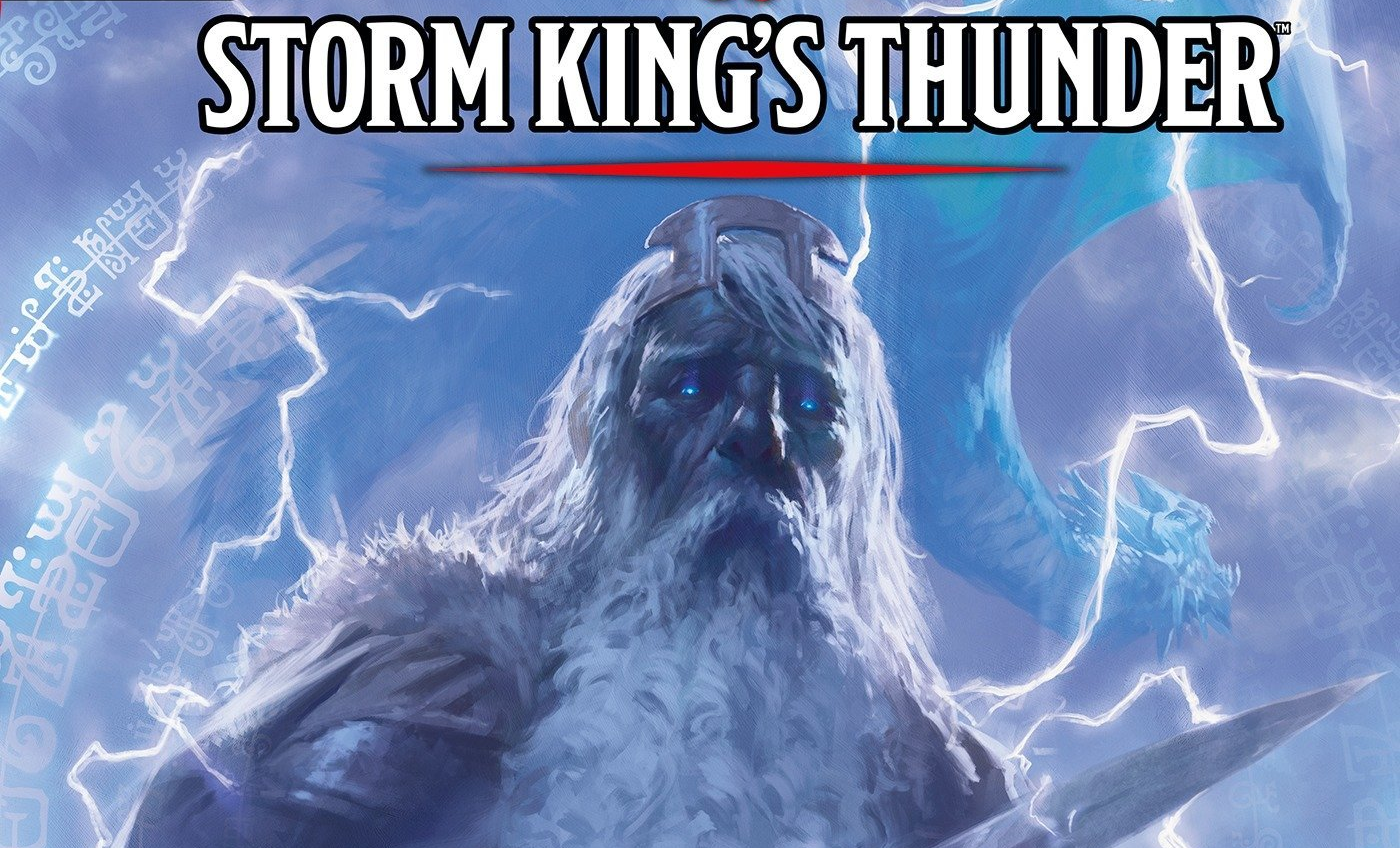
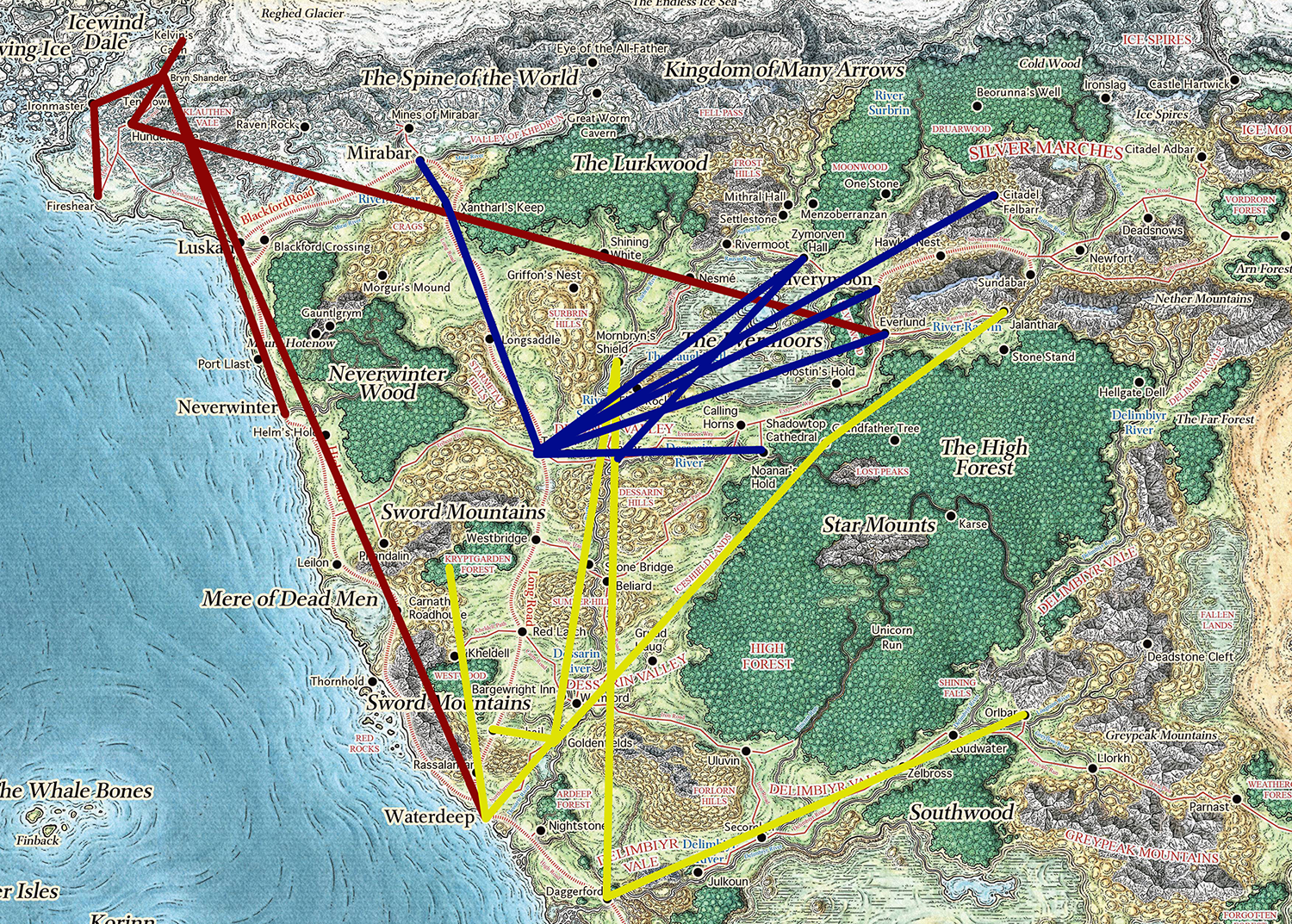
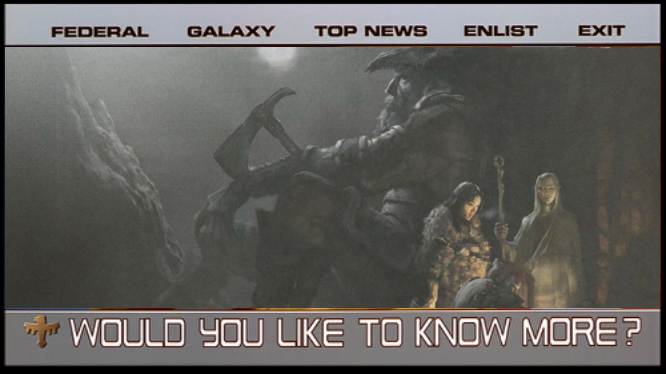
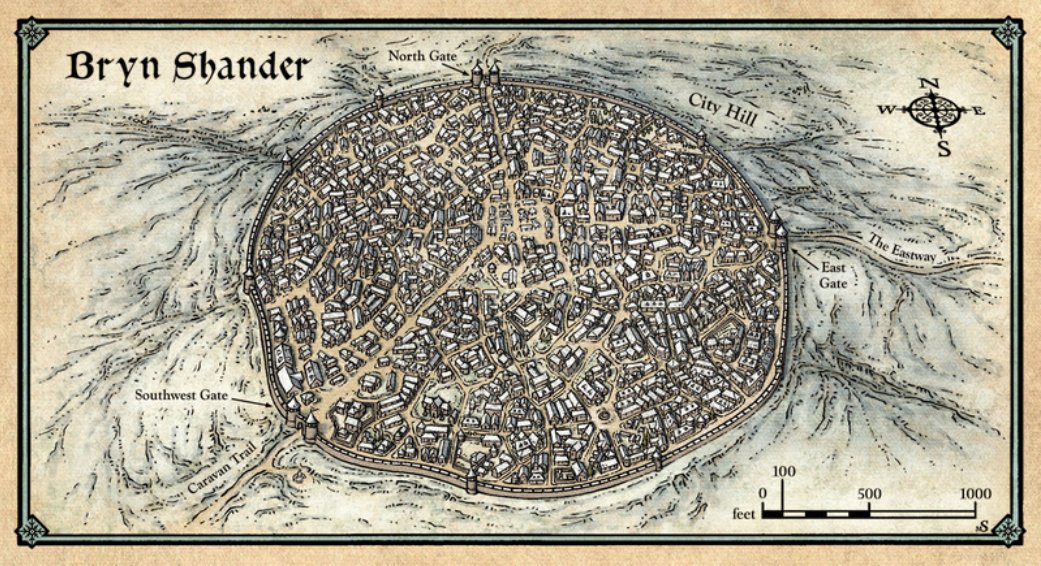
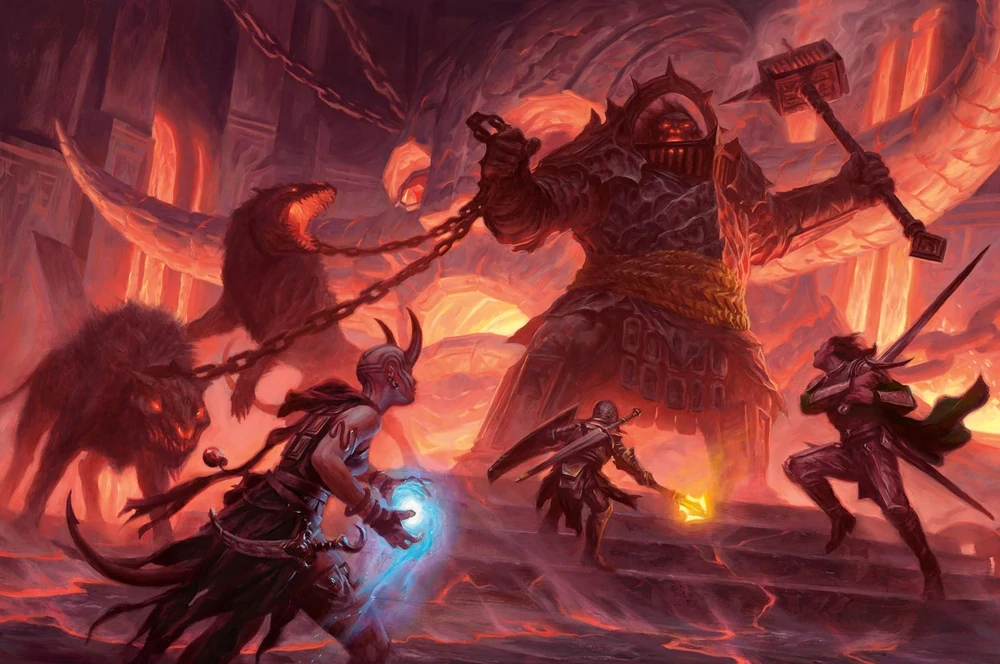
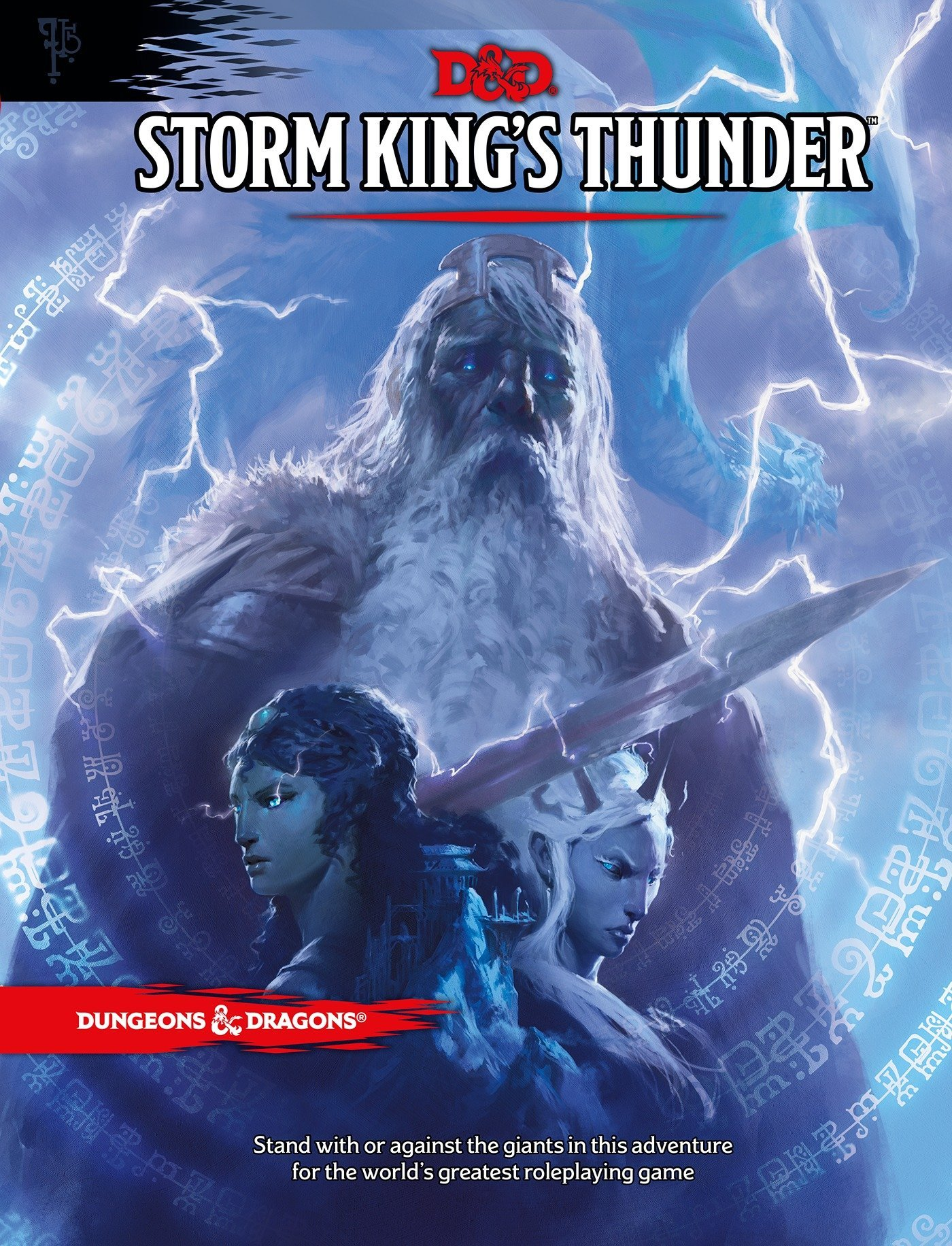
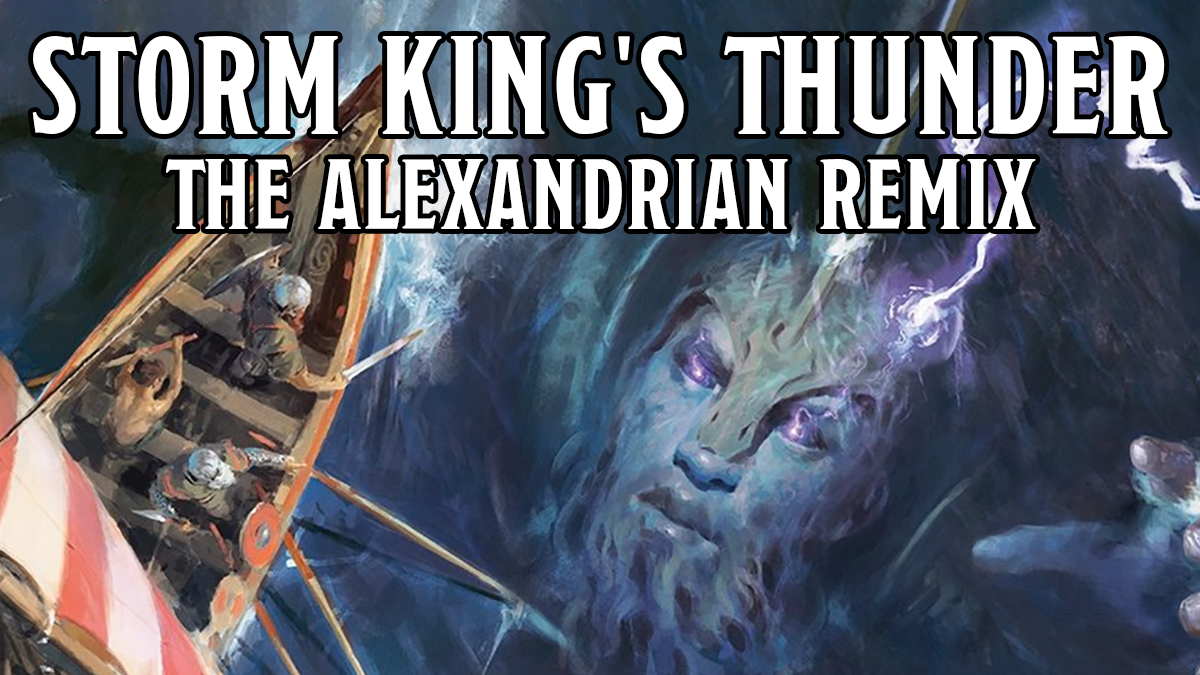











I ran a great campaign with this book but it was completely because I used it loosely and didn’t think too hard (nor did my players) about some of the stuff. So much of it makes no sense at all. I had them cruise around doing various adventures until it felt like they were tough enough and sort of were picking up what was going on. Key to this was having every giant encountered rant about the “breakup of the Order”. The. Harsh at showed up and pointed them the right way. If I remember correctly I barely used him. Pointless character. I always dropped the barbarian artifact quests because at that point it felt redundant. They went straight to blasting giant lord and then the undersea court. That part was hard to dm. If I remember correctly they dinked around with the kraken and then attacked imryth in her lair the end. One of my most successful campaigns for exactly the reasons you wrote. It’s great as a background framework. Not so good if you are trying to make “storybook campaign”.
One thing I never see mentioned about Storm Kings Thunder is the one line in the oracle encounter that says the portal closes behind the PCs if they spend too much time inside – trapping them with no way out. Maybe most people miss it, maybe they ignore it… but my DM didn’t. Our gaming group dissolved after that.
Mr. Alexander, I am so glad you’re back. I hope your basement’s OK, and there are no mold issues.
My players entered Maelstrom and thus the endgame a session ago. I like Storm King’s Thunder. There was work to be done to fit it to our group, but that is to be expected. But much less than Descent into Avernus, for example.
We used Lost Mine of Phandelver instead of Nightstone, and I made sure that the characters had strong ties to the general area, so the attack on Triboar created solid motivation to investigate further (and spank some fire giants).
For the sightseeing around the Sword Coast part, I streamlined the travel routes, basically creating a big loop through interesting locations. The back and forth for small tasks felt unnatural. I also took quests that I liked better from other towns and changed things up a bit.
I used Harshnag as more of a comedy character, a giant bro who the group quickly took to. His “sacrifice” actually touched them. To be honest, scenes like that are difficult, because players are used to facing challenges, D&D created a certain vibe, and heroic sacrifice is a bit at odds with the rules.
All in all, the adventure has a solid foundation, lots of good parts, tons of info and since you will probably not use quite a few bits, it brings parts you can use in other campaigns or as standalone adventures. Well worth it.
I am surprised by the conclusion. The rest of th review reads like it’s unplayable garbage.
My feelings about SKT are broadly similar. I love the concepts, many of the set pieces seem like they would be very exciting and entertaining in play, and the Savage Frontier gazetteer is one of the most useful things published for 5e for the Forgotten Realms.
My biggest disappointment about the adventure is that it offers five interesting and exciting giant lairs, but then only one of them is used for the adventure! Ostensibly this is for “replay” value, but really, who is going to play the adventure five times when there’s a new (and often better) adventure book coming out every six months? If I run this campaign, I think I will discard the entire Eye of the All-Father funnel and just let the players gather rumors and take on whichever of the giant lairs strikes their fancy. I’m not sure how well that works in terms of leveling, but the end of the adventure suggests that the party might go mop up the other giant lords anyway.
Even with its flaws, I intend to include SKT in my “which adventure shall we play next” poll when we wrap up Curse of Strahd. On the other hand, I have no desire to run Tyranny of Dragons or Princes of the Apocalypse, as the work needed to make the adventure enjoyable doesn’t seem justified by what’s in the books. Out of the Abyss seems like it would need a lot of work on the DM’s part, but at least the ideas and set pieces feel interesting.
Wow, this adventure sounds like it has a lot of the same things that are currently driving me insane with Waterdeep: Dragon Heist (a real mess of a book without your remix, I must say)
As I keep trying to make sense of their adventure books I wish they just made sourcebooks with maybe five or six pages of plot hooks in the back, that would honestly be better than the “sort of a setting book with a really sketchy adventure pasted on” they seem to tend to do.
Another $50 mini-campaign book that involves a fair amount of work from the GM to truly make it be a great gaming experience for their players. Justin has talked at length on his site about Waterdeep Dragon Heist, Icewind Dale: Rime of the Frostmaiden, Descent into Avernus, and now this one.
Are there value in these books? It sounds like it. Are they worth the $50 entry price? To me it feels like a very high cost for some really good set pieces to lift and use.
It isn’t the point of this article, but the business implications of the prices WotC are using and the entry costs into the RPG hobby in general would be a very fascinating discussion to have because it feels like WotC is really pricing out the younger gaming audience …
@Yora: I think the key thing to keep in mind is that there’s 250 pages of material here. I have concerns about structure and I think they’re severe enough that most people trying to run this out of the box are likely to end up miserable.
But structural issues can be fixed with a few hours of work. Most of these problems can be addressed by revising the revelation lists and digging deep to fix the scenario hooks (which an experienced GM can probably mostly ad lib by having them more closely align with whatever their players’ objectives and interests are).
This is not trivial. If the adventure didn’t have these problems I’d give the book a Substance 5 out of 5. The fact it clocks in at 3 out of 5 instead is, I think, a fair representation of how flawed the execution is.
A nice summary. I have yet to run STK, but I have spent a good deal of time considering its flaws.
A big flaw, that you didn’t address, is that STK sets up a big mystery: Who killed Queen Neri and why is the Lords Alliance being blamed for her death. Then, it ignores it. One solution is, as you suggest in other posts, is to up the presence of the Kraken Society in the adventure. That would set up both an allied faction (Lords Alliance) that will use the PCs to find out what is going on with the giants and Queen Neri’s death (again, not that STK gives you much information about what happened). And, the Ps will have a covert opposition (Kraken Society) that they can spend much of the campaign working to unmask.
Also as Frangio suggested, Phandelver and other locations in the North offer much better places to start. As your wonderful map illustrates, one of the odd things about the adventure is that it starts in the most southerly location. I agree with your suggestion that a GM needs to work out the introductory path for a campaign and see where the players go along it.
Great review! It would be cool to see you do ones for the other 5e campaigns you have remixed.
Sounds like just about every WotC 5e adventure I’ve read about. Some good ideas, but tons of work for the DM to add interesting details, make things make sense, and follow-up on empty threads.
Having to fill in the gaps and add interest to everything makes a bad adventure module.
I played the beginning of this campaign (the first chapter twice – once as an Adventurer’s League event, and once in an actual campaign).
I found that it was incredibly railroady in the first part. It’s as though the writers decided that levels 1-4 are too boring to deal with, and wanted to rush players through them as quickly as possible. I suppose they’re eager to get PCs to a level where they can start fighting actual giants as soon as possible, but it really felt forced and hurried.
And that’s a shame, because there’s a lot of material there that you could easily stretch out into an interesting mini-campaign about helping Nightstone recover from the attack. Who gets to control it? How does the attack affect the power balance with the area’s orcs and elves?
(Incidentally, the “special events” involving the elves and orcs strike me as yet another railroaded “watch cool events that you PCs have no chance of affecting” moment. A large group of orcs attacks, but if they’re in danger of defeating the PCs – which seems likely – an equally large group of random elves let by another kewl NPC prances in to save the day? And rubs it in by calling out “you’re welcome”? Give me a break!)
Ahem. Anyway…
Putting Nightstone back together would be an interesting project for low-level characters. But no! You have to go with the crazy cloud giant because some Powers that Be said so. And if they ask to go somewhere other than one of the three designated railroad junctions, he agrees but then forgets! It’s absurd.
I don’t remember as much of the other sections; but I get the impression that they were trying to make it cool by having the PCs zip all over the Sword Coast. Which would be fine… except that again, they rely on railroads to get you there.
I think your instinct is right; Storm King’s Thunder is much better thought of as a sourcebook rather than a full campaign.
I just finished running STK for my group last month after a 4 1/2 year campaign, levels 1-20 plus epic boons. We had a great time, but I did do a lot of work to adapt/expand it.
-The first big change that I made was to base the early part of the campaign around recovering the fragments of the crown of the ancient giant empire (which is what Zephyros was doing when he met the party). This allowed me to do a lot of custom adventure design and took our group up to about level 12.
-Once the fragments had been recovered, the second thing that I did was allow each of my players to take on a giant as a sort of “second character”. By the time the crown fragments had been recovered the party was high enough level that the giants and the regular characters were more-or-less peers. Harshnag and Zephyros both became “PCs”, and eventually so did Zaltember (of all people!). This was the phase where the group really got directly involved in what the giants were doing (especially Maelstrom) and ended with the crown being re-forged.
-For the final phase of the campaign, I ran a civil war between the giants who were willing to follow Maelstrom (and play nice with the small folk) and the ones who wanted to continue to raid and pillage (etc…) This involved a mix of diplomacy and mass-combat and I was able to adapt a fairly serviceable version of the old “War Machine” rules from the Companion set. At the campaign’s end, the giants were unified under a peaceful ruler who wanted to engage with the small folk and Maelstrom officially joined the Lord’s Alliance.
The de-protagonization of the PCs was subtle, but persistent. I was able to manage this (at least well enough) by doing things like giving the players a “giant character” once they were high enough level, and making stopping Iymrith’s machinations a strong focus for all of the characters.
As far as the fragility of the hooks goes, I just made sure to customize them to my players. As a DM I’m a tinkerer, and I can’t stop myself from tinkering/customizing so I really don’t try to. Not sure what else to say than that.
There’s very little in the book that I didn’t use in some way or another. Most of what fell by the wayside was the gazetteer stuff in Chapter 3 (there’s just so much of it), and I also scrapped the Uthgardt Mound subplot and the Dragon Cult airship. I did end up using all of the giant fortresses though, some as Dungeon Crawls, others as Diplomacy crawls.
I’d agree with the shortcomings in the review above, but I found them eminently fixable and this campaign was an all-time highlight for me and my players. Maybe it wouldn’t be the best one to run right out of the beginner’s box, but once you’re comfortable enough as a DM to adapt/generate material I can’t recommend Storm King’s Thunder highly enough!
One thing that I did notice when running this game though: fights against giants can be quite hard, and they don’t necessarily get easier as the characters level up.
Because of the limited AC range in 5e, giants hit often and do a lot of damage, even against high-level characters. Along with their large amounts of hp, I think that puts them in a “sweet spot” for 5e mechanics.
If giants only show up occasionally in your campaign, that’s probably not a big issue, but there’s no avoiding them in this campaign. The book (maybe) lampshades this in the “Deadly Encounters” section on pp. 16-18, by saying that many of the encounters in the adventure “are deadly by design. They test the player’s ability to make smart, informed decisions under pressure”. Make of that what you will.
In my game, this was partly solved by having “normal adventures” focused on finding the Crown/MacGuffin in the low-to-mid-range levels, by giving my players a second “giant PC” when they hit about 12th level, and also by focusing on roleplaying/politicking among the giants in the later giant-heavy parts of the campaign.
I dealt with the difficulties of giant-based combat encounters for long enough that I ceased to really notice them, but that’s a challenge anyone considering running this game should know about.
I am running SKT right now as a Percy Jackson esk game where the players are decended from giant types (called Giant Kin) so that the party actually has some sort of stake in the Ordning. I had Harshnag protecting giant kin children just outside of Helms Hold as during the attacks, many have abandoned their own kin based on being part giant. This introduces him to the party early and creates a sympathetic link between him and the party before he actually joins the group. Harshnag only agrees to take them to the Eye after they figure out a place the children can safely go. At the Eye of the All Father, the statues will each have a fated weapon that each PC can grab to help them fix the ordning based off their giant type and I have the Imryth encounter after getting those weapons. The group can still investigate into the conch which should lead them into one of the places after they leave. Essentially, they can go to the different areas and talk to the different giant communities (utilizing all the fetch quest encounters without the back and forth) with the end of the game building the end to a civil war they alone can stop. I started with cold open in Bryn Shander and had their Chapter 3 extend to learning more about the Giant kin. I took some background stuff from Rime of the Ice Maiden too to create additional tension in the world.
I’m running STK now. I switched Goldenfields to Phandelin as I transitioned from one module to the next. I figure the PCs will end up defending both Bryn Shander and Triboar to get the most out of the module. I’ll also have them raid the three lairs from Gygax’s Against the Giants along the way if things get dull. I hope it works out.
Great review! I really like how you broke down the strengths and weaknesses of Storm King’s Thunder without just repeating the usual talking points. The pacing issues and the “why are we doing this?” moments you mentioned definitely stood out in my playthrough too. Still, it’s a solid campaign with tons of potential when tweaked a bit.
Also, not related to D&D—but if you’re ever in the mood to browse something totally different, I’ve been building a fun site about fast food culture, including the full Burger King menu. It’s at bkmenus.net if you’re curious!
…is that what spam looks like now? With enough synthesized blather that it might actually be a real comment?